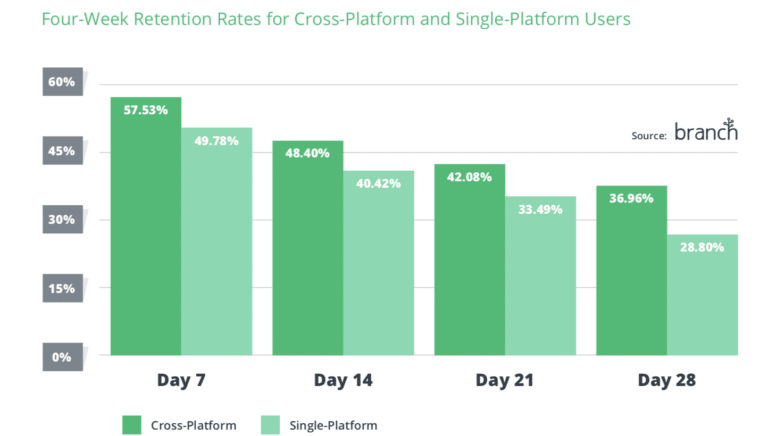Picture this: You own an app and want to measure all touchpoints users take on their journey to conversion. But they interact with your brand at various places at different times, like a visit to your mobile website, desktop website, and clicking a social media ad before finally installing. Connecting these fragmented interactions is a challenge many brands have to face. These long, nonlinear user journeys are now the norm — which is why creating cross-platform campaigns is crucial in order to capture users at every possible interaction.
What makes a campaign cross-platform?
Cross-platform campaigns encompass reaching consumers/users on multiple platforms to bring them relevant, targeted content that drives them to conversion and keeps them coming back to your app. As an example, imagine that your product is a fitness app. You target people ages 18-35 looking for quick workouts they can do at home. To tap into your audience, you have a mobile SEO and paid SEM strategy that utilizes keywords/phrases that they are likely to search. If potential users become aware of your app through that strategy but still don’t download, you show ads on social media and across different websites to keep your brand top of mind. When they find your app and become an active user, you send push notifications to remind them to work out that brings them directly to your app.
Why does having a cross-platform mobile strategy matter? Not only does a cross-platform strategy help you reach more potential and active users, cross-platform users have better retention rates than their single-platform counterparts:
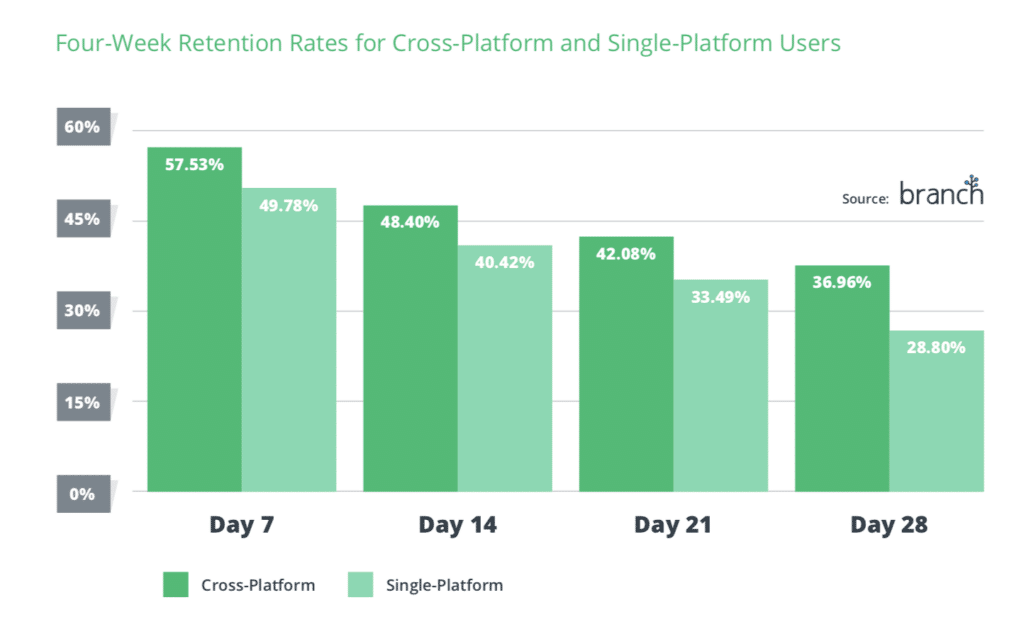
This difference in retention rate becomes even more pronounced with time. The bottom line: if you’re not ensuring your users are cross-platform, you’re missing out on users with higher LTV and retention rates. Because the app often offers a better experience than the mobile web, failing to bring users into your app across all platforms means failing to provide a great user experience. And in an increasingly fragmented mobile world, providing a delightful user experience is a must to reduce friction and dropoff no matter what channel or platform your campaigns run on.
Here are our top tips to transform your mobile strategy — and your users — to become more cross-platform:
Tip 1: Deep link into your app
Deep linking is the backbone of any top cross-platform app campaign. If you’re displaying ads or links about your app on any platform or channel, users who click on them should go into the app, and ideally be linked into relevant content rather than the general home page. If you run a social media ad campaign, for instance, the ad should lead to the app or relevant content after users click.
Not only does deep linking provide the best experience for your users, leading to higher levels of engagement, installs, and conversions, but deep linking also goes hand in hand with attribution, and complements the data you need to effectively measure your campaign performance (we talk about this more in Tip #4).
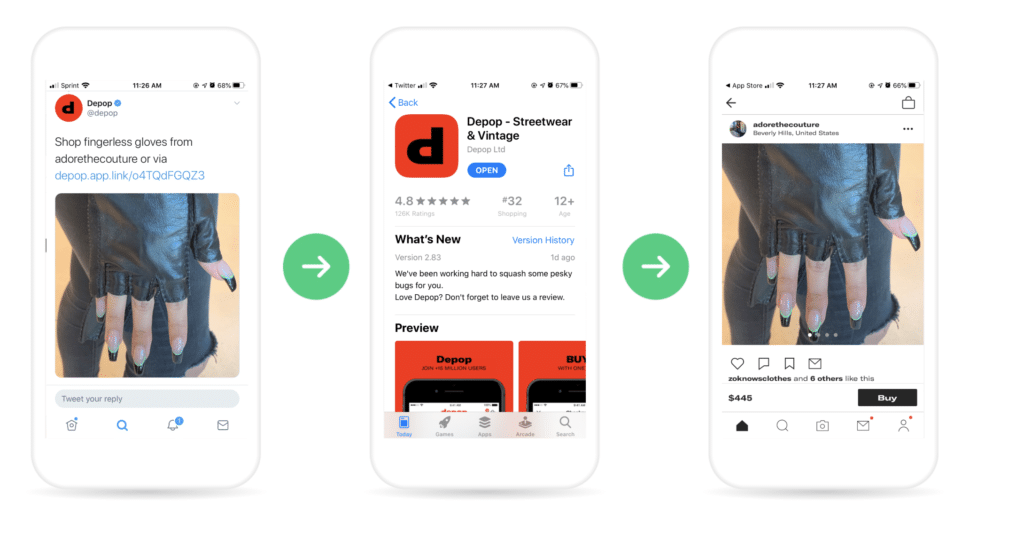
This example from Depop is a fabulous example of a deep linking flow. Users see a link on Twitter advertising a product. When they click, they’re directed to the App Store if the app is not installed. Once they install the app, the context of the user’s click is preserved upon install, and users are directed to the product page within the app. Goodbye dropoff, hello engagement, installs, and in-app purchases!
Tip 2: Evaluate which acquisition channels are the most effective
We recommend auditing the current channels you’re using to acquire users to determine what’s working, what’s not, and what you should further invest in. This is even more relevant today, as your acquisition strategies might not be working the same way due to COVID. You want your acquisition channels to acquire high-value users likely to stick around. In a Branch study, we found that users from organic channels like smart banners have better retention rates than paid channels:
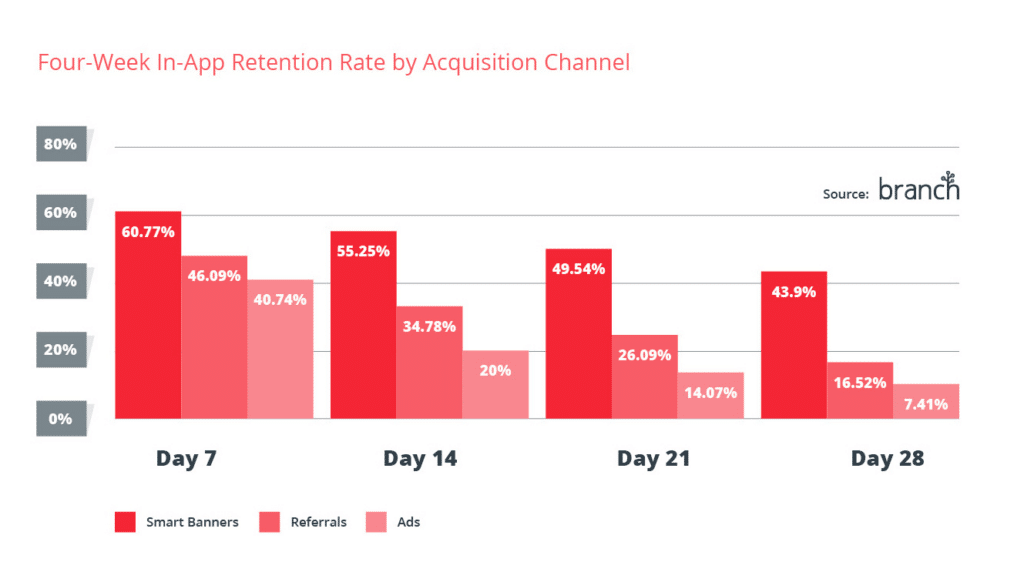
To determine the effectiveness of your acquisition channels, we recommend performing a cohort analysis, aka the study of user groups based on behaviors over time. Cohort analysis allows you to group users who installed your app based on a campaign, allowing you to gain a more detailed understanding of the campaign’s impact over time. Equipped with this actionable data, you can then make more data-driven decisions when it comes to investing in or cutting down a campaign. With cohort analysis, you can ask questions like “are retention rates higher for my paid or organic users?”, or “for users I re-engage in an email campaign, how much revenue do I drive on web vs. app?”
Digging deep and evaluating how your acquisition campaigns on various platforms are performing will help you cut or rethink the ones that are underperforming, or optimize the ones that are doing well.
Tip 3: Think beyond online
It’s true that today’s users mostly live online and are captured online, but if you’re not thinking about your offline users (should they exist), you’re missing out. We recommend using QR Codes to tap into your existing offline users to bring them online, making your strategy even more cross platform. In fact, QR code adoption has seen a huge surge because of COVID, as a lot of their use cases are to encourage social distancing and contactless activities such as using a QR code to order online or look at a restaurant menu. Compared to January to August of last year, Branch has seen a 496% surge in QR codes being the last attributed touch before conversion. Simply put, now is the perfect time to start or expand your usage of QR codes to drive user acquisition, improve the experience for your customers, and make your marketing strategy more cross-platform.
Here are some of our favorite examples on how to use QR codes to inspire your next QR code campaign:
Your physical storefront locations
Peet’s, Belk, and Joe and the Juice placed QR codes on their store locations to encourage customers to download the app. This strategy is quite a low lift as it leverages your existing customer base who already are aware of and actively interact with your brand. Bonus: Run a competition between stores to see who can drive the most downloads!
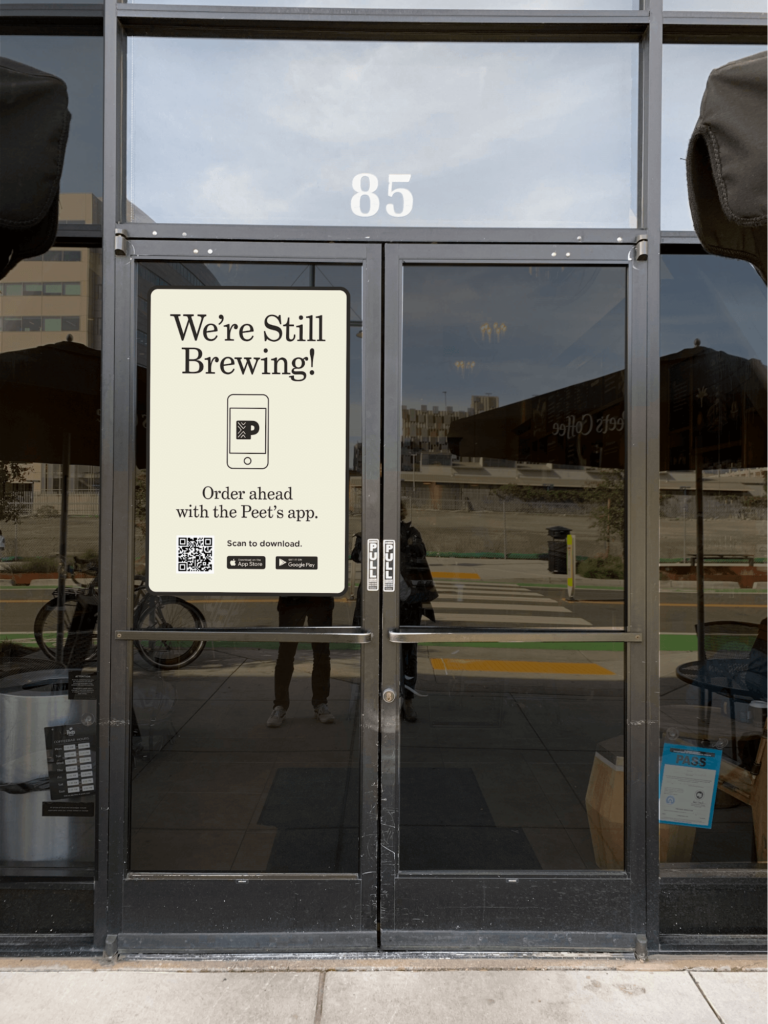
QR code on Peet’s store encouraging customers to order ahead.
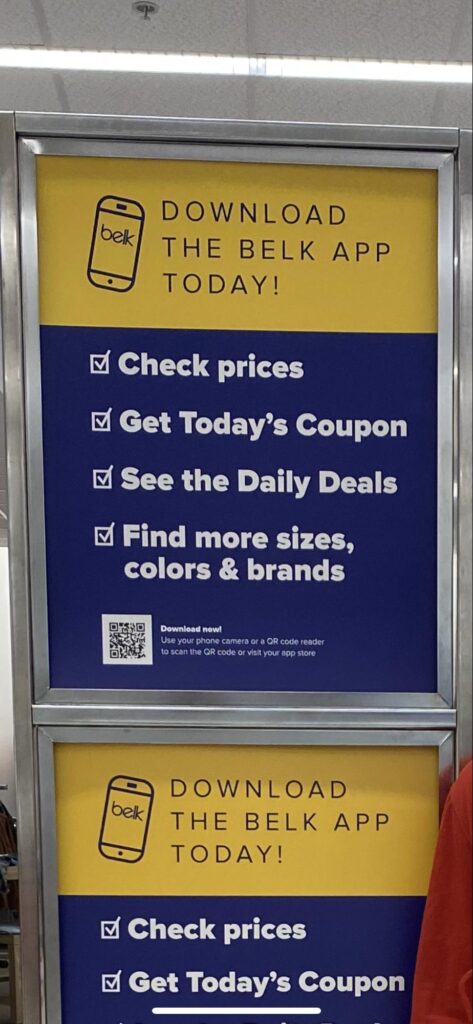
QR codes on signage inside Belk.
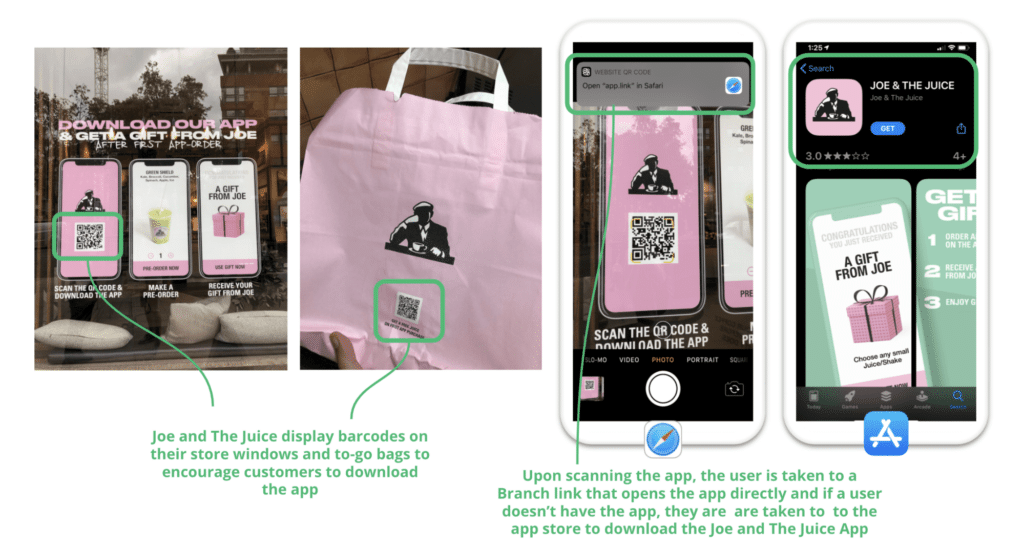
Joe and the Juice QR codes on storefront locations.
Physical collateral like mail, brochures, receipts, or packages sent to customers
This is another easy way to capture more users, as adding a QR code to a package a customer purchased piggybacks off high intent and engagement. Meanwhile, adding QR codes to direct mail campaigns appeals to new users interested in coupons, discounts, and in-app deals.
QR codes placed on physical collateral can also be segmented to measure which item, location, or package type drives the most installs. Promo codes can easily be integrated into the QR code to further entice users, including deferred deep links that take users to a specific in-app only discount or product promotion.
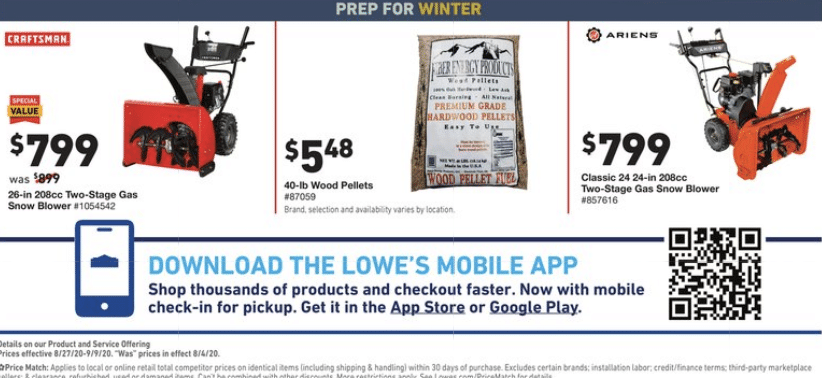
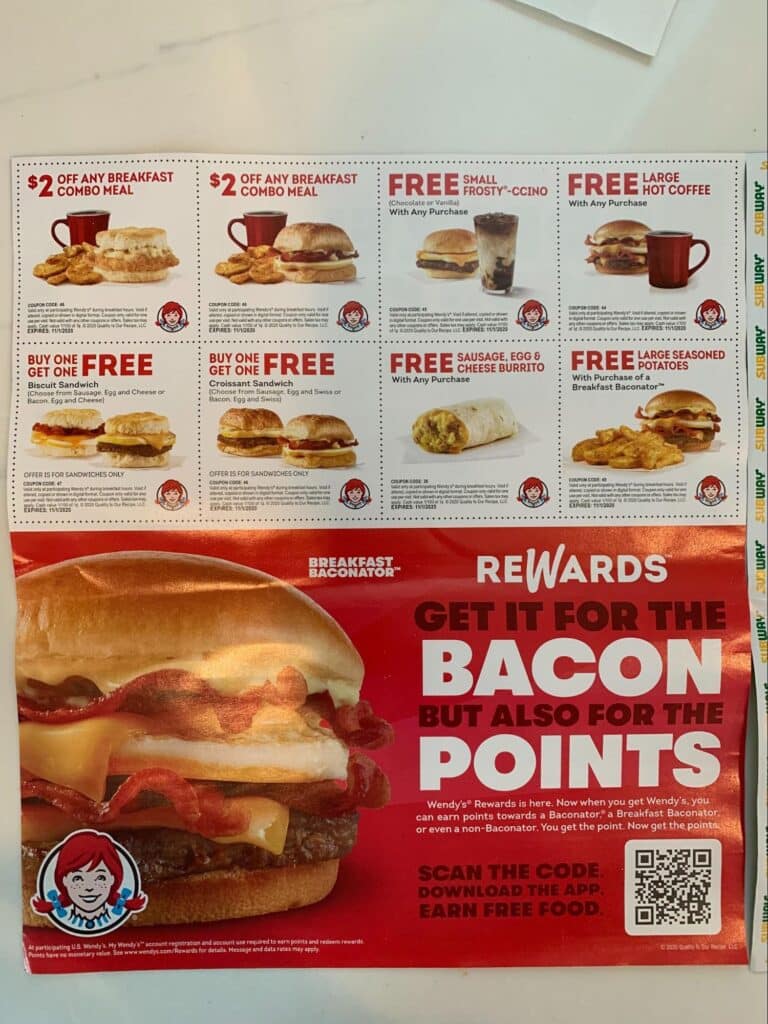
Lowe’s and Wendy’s placed QR codes in their direct mail campaigns.
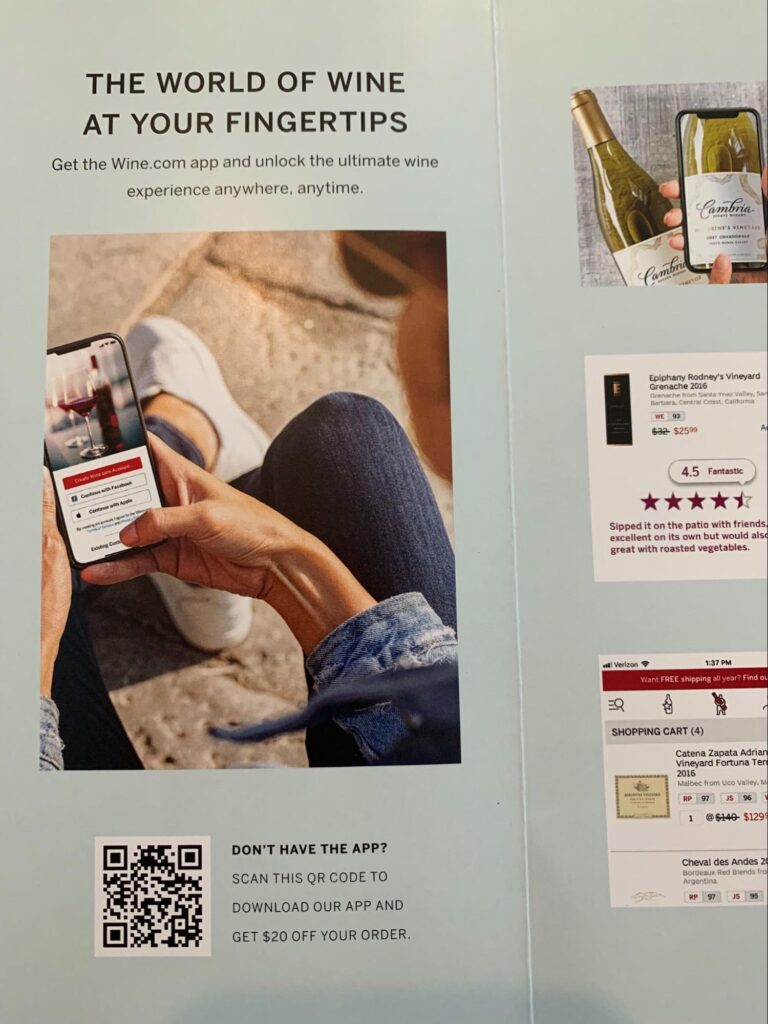
Wine.com placed this QR code in a package insert, capturing the momentum of currently engaged customers.
In digital/online ads
We know we encouraged you to use QR codes as an offline to online strategy, but they can actually be used online as well across TV, your desktop website, and other online campaigns.

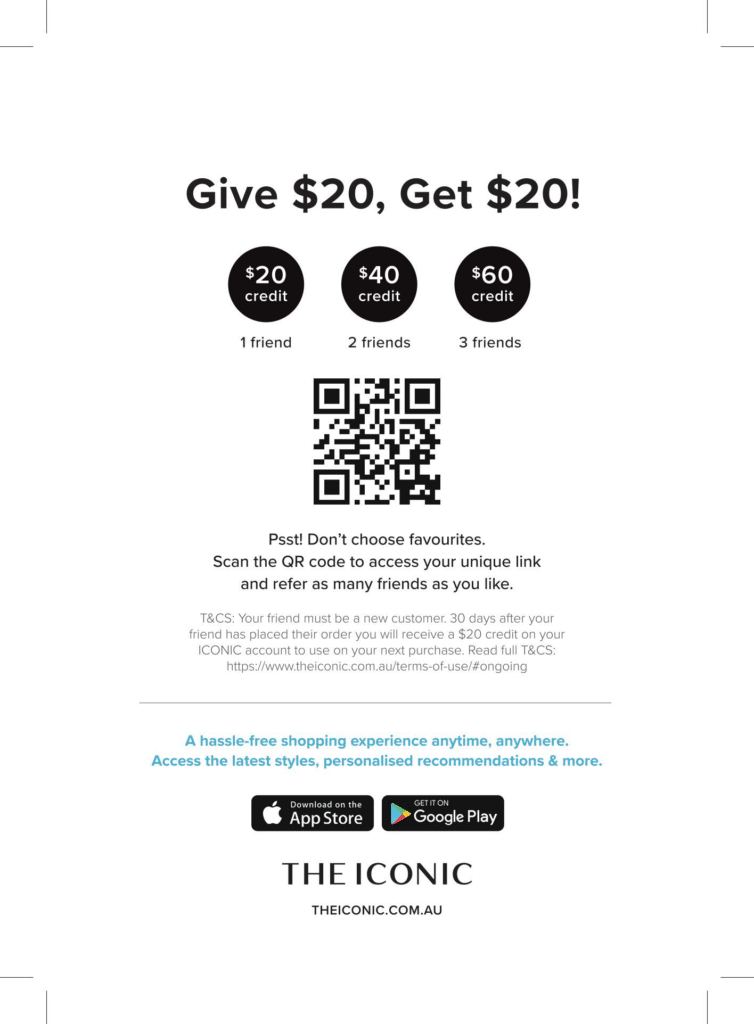
The Iconic integrated QR codes into this referral campaign. No promo codes needed, users who scanned the QR code automatically had it applied.
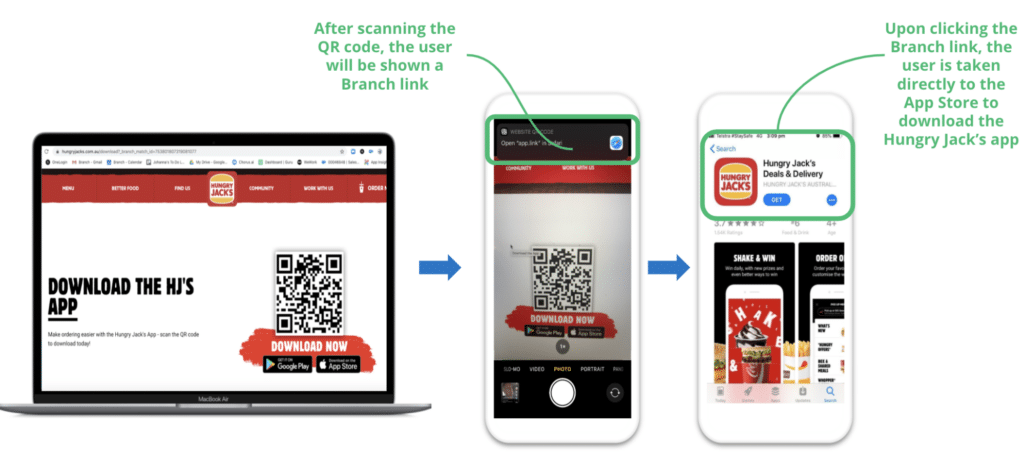
Hungry Jack’s used QR codes to drive desktop users to the app — previously, the Google Play and App Store button led users to a dead end. After being live for only one week, they drove $1000 in in-app revenue!
Tip 4: Track and measure your results
As we mentioned earlier, user journeys are fragmented and nonlinear across different platforms, making it even more important to measure your results. Attribution should be a given no matter what platform you’re investing in, and the attribution provider you choose should measure campaigns across all platforms, channels, and devices, from paid to organic activities.
Branch’s best-in-class attribution solution helps you accurately measure your users’ journeys across all touchpoints to give you better visibility into your activities across all channels and a full understanding of your ROI. By taking individual, disconnected customer interactions and stitching them together in a single thread, we can reveal full visibility into your campaigns’ performance, compare them to your other campaigns, and provide the most accurate measurement.
Ready to take your marketing strategy and users cross-platform? Check out these awesome examples of cross-platform app experiences to get inspired — and chat with our sales team to see how Branch can transform your cross-platform growth strategy!






















